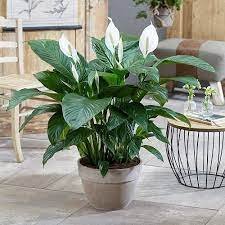
We are all aware that plants (indoor plants) are essential to human existence on earth and are one of the main sources of oxygen. The air is said to be fresher and cleaner in areas that are densely surrounded by various types of plants and flora.
The quality of the air is becoming worse every day as pollution levels rise. As a result, it makes other respiratory illnesses more probable, including bronchitis, sinusitis, and asthma. Even in situations when pollution and the inhalation of hazardous chemicals are unavoidable, indoor plants can assist in maintaining an adequate supply of clean air and oxygen.
However, there are other plants that can help your breathing by creating more oxygen. Being surrounded by green plants offers us an unexplainable feeling of serenity or joy.
Here is a list of the plants that produce the most oxygen.
The pothos plant has gorgeous, vibrant leaves and requires very little maintenance. It’s an excellent plant for enhancing the quality of indoor air. It is well known for releasing airborne contaminants such as formaldehyde, benzene, and carbon monoxide.
It is an excellent indoor plant for producing and releasing oxygen at night. Pothos has a high rate of conversion, making it the finest indoor plant for oxygen. In an experiment where the CO2 concentration was dropped from 454 PPM to 425 PPM, leading to increased oxygen levels, it was possible to demonstrate a 6.5% decrease in carbon dioxide.
Areca palms are also known as golden palms, butterfly palms, and yellow palms.
Being surrounded by two enormous plants can considerably increase the amount of oxygen in your home. These gorgeous Areca palms are tropical trees that create a lot of oxygen.
In addition to producing large amounts of oxygen, they also remove harmful airborne contaminants like formaldehyde, xylene, benzene, and toluene.
Snake plants, commonly referred to as “mother-in-tongue,” are renowned for their astounding ability to produce oxygen. It was one of the most well-liked indoor plants before it was discovered to produce oxygen; it could be found in both homes and workplaces.
According to clean air studies funded by NASA, this plant cleans the air by absorbing formaldehyde, nitrogen oxide, xylene, benzene, and trichloroethylene. Because it respirates at night and photosynthesizes during the day, this particular plant is unusual in that it shouldn’t be maintained in a bedroom because it consumes oxygen at night.
The Gerbera Daisy, unquestionably the most beautiful of the group, is widely used as a garden decoration. The colorful flowering plant not only brightens the space, but it also provides an excellent supply of oxygen.
According to NASA’s Clean Air Study, gerbera daisies remove air pollutants including formaldehyde, benzene, and trichloroethylene. It is also known for releasing oxygen at night and accumulating CO2 during the day. If you have breathing issues or sleep apnea, keep gerbera daisies by your bed for better sleep.
Weeping Fig
A small but gorgeous plant with full, thick, and glossy leaves is the weeping fig, commonly known as the ficus tree. The weeping fig can raise oxygen levels, according to a study done at the Pukyong National University in Busan, Korea. Additionally, it has the ability to filter out harmful VOCs including formaldehyde, benzene, and trichloroethylene.
According to several studies, these are the best houseplants for creating oxygen, and growing them inside may boost your indoor oxygen levels as well as your mental clarity, immunity, and energy levels.
Because they have more photosynthetic apertures, or stomata, larger plants can produce more oxygen. The aforementioned plants may be a great addition to enclosed buildings like homes and businesses since they filter hazardous pollutants created by daily activities and also supply the crucial element “O.”
The advantages of aloe vera are widely established. On the other hand, many people might not be familiar with its air-cleaning and oxygen-increasing qualities. The ability of the aloe vera plant to remove airborne pollutants like benzene and aldehydes is well known.
It differs from other plants in that it also releases oxygen at night, which makes it a great choice for beds and other small places. They are slow-growing plants with large, pointed leaves covered with a white, transparent gel. Throughout the world, this medicinal herb is used in a wide range of treatments and complementary therapies.
Conclusion
House plants adorn your space and make you feel good inside for taking care of a living thing, in addition to emitting oxygen.
Taking care of indoor plants brings the caregiver great delight and peace, which enhances your wellbeing as a whole.
When you take in adequate oxygen and clean air around you, your neurological system, immunity, and focus are all improved.
Overall, since they have more stomata for photosynthesis, house plants with wide leaves have ample surface area to create more oxygen.
Additionally, especially in tiny areas, it is simple to absorb contaminants.
